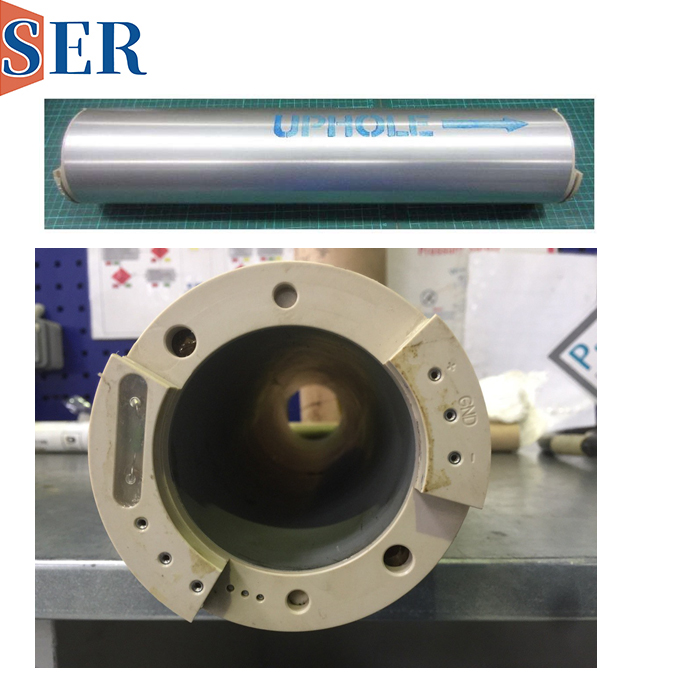High-Temperature Lithium Thionyl Chloride (LiSOCl₂) Batteries for Extreme Environments--SER Battery
High-Temperature Lithium Thionyl Chloride (LiSOCl₂) Batteries for Extreme Environments--SER Battery
In the modern era of technological advancements, batteries play a crucial role in powering a wide range of devices and applications. Among these, high-temperature lithium thionyl chloride (LiSOCl₂) batteries have emerged as a reliable power source for applications that operate in extreme environments. These high temperature batteries exhibit excellent performance characteristics, such as wide temperature range, vibration and shock proof design, and low self-discharge rate, making them ideal for use in oil and gas downhole measurement, tunnel inspection instruments, tracking systems, and sensors.

Introduction to High-Temperature LiSOCl₂ Batteries
High-temperature LiSOCl₂ batteries are a type of primary battery that utilizes lithium as the anode and thionyl chloride (SOCl₂) as the electrolyte and cathode active material. These batteries are designed to operate efficiently at temperatures ranging from -20 °C to +200 °C, surpassing the performance limits of traditional batteries. The unique chemistry of LiSOCl₂ batteries allows them to maintain stable voltage output and high energy density even under extreme conditions.high temperature LiSOCL2 battery,ER14505S-165 celsius degree,ER17335S,ER17505S-165-2P,ER21102S,ER26500S,ER26760S,ER26102S
Operating Temperature Range
One of the most significant advantages of high-temperature LiSOCl₂ batteries is their wide operating temperature range. Conventional batteries often suffer from performance degradation at high temperatures, but LiSOCl₂ batteries remain stable and reliable. This characteristic is particularly beneficial for applications such as oil and gas downhole measurement, where temperatures can exceed 150 °C. Similarly, in tunnel inspection instruments and other underground applications, the batteries must be able to function reliably in environments with fluctuating temperatures.
Vibration and Shock Proof Design
High-temperature LiSOCl₂ batteries are also designed to withstand vibrations and shocks. The internal structure and materials are optimized to ensure stability and durability, even in demanding applications where the batteries are subjected to constant movement and impacts. This feature is crucial for use in tracking systems, where the batteries may be mounted on moving objects or in locations prone to vibrations.
Low Self-Discharge Rate
Another notable characteristic of high-temperature LiSOCl₂ batteries is their low self-discharge rate. Self-discharge refers to the gradual loss of charge from a battery when it is not in use. For LiSOCl₂ batteries, the self-discharge rate is less than 1% per year, significantly lower than that of other battery types. This means that the batteries can be stored for extended periods without significant loss of charge, reducing the need for frequent replacement or recharging.
Applications in Extreme Environments
The unique characteristics of high-temperature LiSOCl₂ batteries make them ideal for a wide range of applications in extreme environments. One of the primary applications is in oil and gas downhole measurement. In this field, the batteries are used to power sensors and instruments that measure various parameters, such as temperature, pressure, and fluid composition, in the harsh downhole environment. The ability to operate at high temperatures and withstand vibrations and shocks makes LiSOCl₂ batteries a reliable choice for these applications.
Similarly, tunnel inspection instruments often require batteries that can function reliably in underground environments with fluctuating temperatures and high humidity. High-temperature LiSOCl₂ batteries provide the necessary power for these instruments to capture high-resolution images, measure distances, and detect any potential hazards.
Tracking systems, such as those used in logistics and asset management, also benefit from the use of high-temperature LiSOCl₂ batteries. These batteries provide reliable power for tracking devices, even when mounted on moving objects or in locations prone to vibrations. The low self-discharge rate ensures that the batteries can maintain charge for extended periods, reducing the need for frequent maintenance and replacement.
Advantages Over Other Battery Types
High-temperature LiSOCl₂ batteries offer several advantages over other battery types for applications in extreme environments. Firstly, their wide operating temperature range allows them to function efficiently even at temperatures that would cause other batteries to fail. Secondly, the vibration and shock proof design ensures stability and durability in demanding applications. Thirdly, the low self-discharge rate reduces the need for frequent replacement or recharging, making the batteries more cost-effective and convenient to use.
Challenges and Future Developments
Despite their numerous advantages, high-temperature LiSOCl₂ batteries also face some challenges. One of the main challenges is the cost of production, which is relatively higher than that of some other battery types. However, with ongoing research and development, it is expected that the cost of LiSOCl₂ batteries will gradually decrease, making them more accessible and affordable.





